 |
| HAWKER HUNTER T.8C XF289 - '875' |
| XF289's service history
Hawker Aircraft (Blackpool) Ltd built XF289 for the Royal Air Force, and was delivered to the RAF at 5MU (Maintenance Unit) Kemble on 2nd November 1955. Following preparation work to get the aeroplane ready for service, XF289 was issued to RAF 67(F) Sqn at RAF Bruggen as aeroplane 'Q', located in West Germany where the RAF had a large overall presence, in January 1956. This period proved to be XF289's only posting, as following a flying accident it was returned to Hawker Aircraft Ltd/ on 14th December 1956. Selected for conversion to T.8 configuration. Hawker Aircraft Ltd employed Armstrong Whitworth at Coventry to carry out the work on its behalf, and XF289 was handed over to the Fleet Air Arm at RNAS Lossiemouth on 27th April 1959. It was prepared for military service, and was issued to 764NAS (Navy Air Squadron) at Lossiemouth in September 1959 as aeroplane '709', where it remained in service for the next four years aside from the occasional 'rest' whilst under maintenance. On 3rd December 1963, XF289 was moved to 759NAS at RNAS Brawdy, where it was operated on advanced flying training duties as '662' with a BY shore code on the tail fin. A move to 738NAS also based at Brawdy followed in April 1965, becoming '777' with this Unit. Following conversion to a T.8C the following year, XF289 was returned to Fleet Air Arm service with 738NAS and remained in use until 6th March 1968, when it was moved to 5MU Kemble for maintenance and subsequent storage. XF289 arrived at Sydenham on 16th November 1974, journeying by road and then by sea for modernisation and re-introduction to service. The work took nearly a year to complete, and XF289 was issued to the Fleet Requirements and Air Direction Unit (FRADU) at RNAS Yeovilton on 7th October 1975 as aeroplane '872'. It was operated as such from Yeovilton for the next eight years, aside from a period of maintenance (July-September 1977) and a paint re-finish (August 1979) at RAF Kemble. |
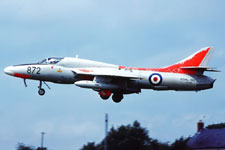 [© Eric Tammer] 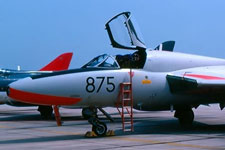 [© Robin A. Walker] 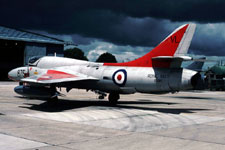 [© Dick Louhuis] | ||
|
|||
| | |||
XF289's civilian life Offered for disposal in November 1994, XF289 was sold to George Lazik, based in the USA. It was registered as G-BYHI and ferried to Exeter where Barry Pover's Classic Jet Aircraft Company began to prepare the aeroplane for its long ferry flight across the Atlantic Ocean. Placed on the Us register as N289XF, it and GA.11 XE707 made the first ever crossing of the Atlantic Ocean by Hunters during July 1995, Brian Grant and George shared the piloting responsibilities of XF289 throughout the trip. During 2005, the aeroplane was sold to Lortie Aviation Inc (formerly Northern Lights Combat Air Support) based at Quebec, Canada. The airframe was broken up for spares, helping to keep its owners extensive fleet of Hunter F-58s flying on military contract work. The cockpit section still survives and is in storage. - December 2020 Links |
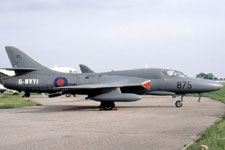 [© Peter Hellier] 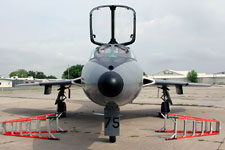 [© Robert Guilford (1933-2006)] | ||
| | |||
| << Previous airframe | Next airframe >> |